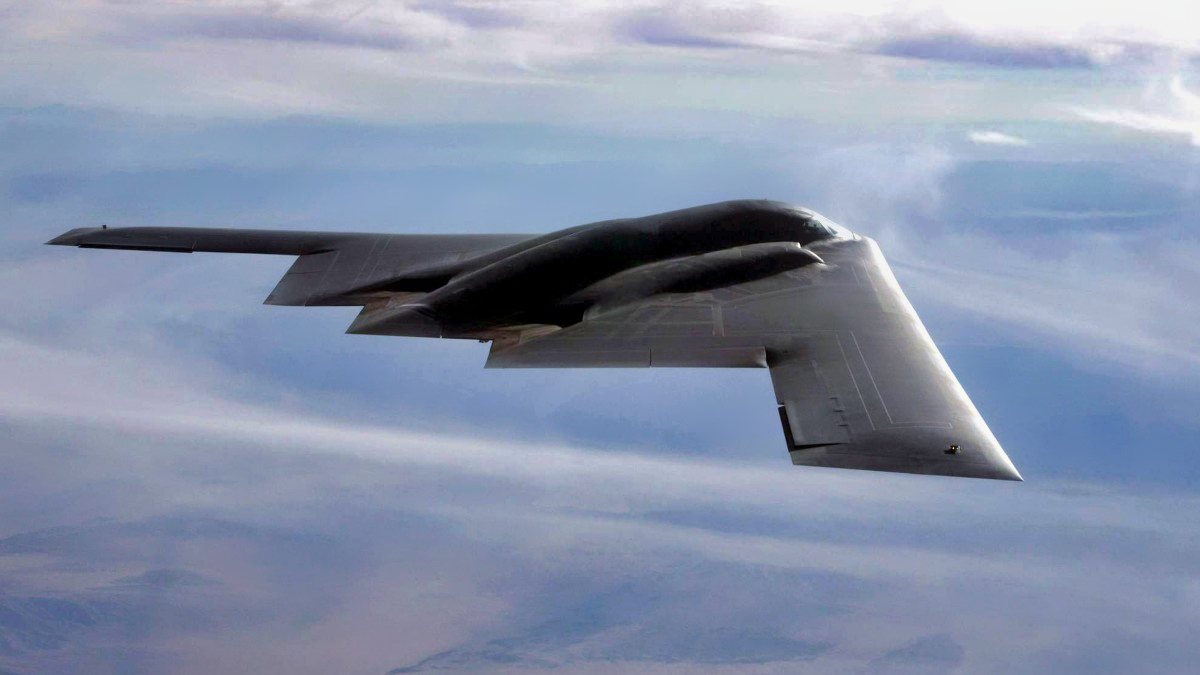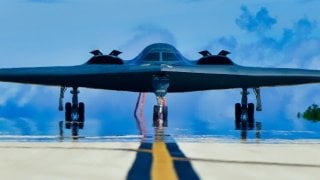There Is 1 B-2 Bomber Problem That Won't Ever Go Away
Currently, the B-2 fleet, which consists of only 19 aircraft, is set to be equipped with the extended-range GBU-62 JDAM-ER, enhancing its strike capabilities as it remains in service until the B-21 Raider's introduction in the 2030s.
Summary and Key Points: In January 2017, two Northrop Grumman B-2 Spirit bombers from Whiteman Air Force Base executed a complex and costly 34-hour nonstop mission to bomb Islamic State targets near Sirte, Libya. This mission, part of President Barack Obama's counterterrorism campaign, marked the B-2's last combat sortie to date.

-The operation required extensive aerial refueling and cost around $8.8 million, excluding additional costs for refueling and munitions.
-Despite the high expenses, the B-2's advanced stealth capabilities ensured the mission's success.
- The Problem, a Numbers Challenge That Can't Be Fixed: Currently, the B-2 fleet, which consists of only 19 aircraft, is set to be equipped with the extended-range GBU-62 JDAM-ER, enhancing its strike capabilities as it remains in service until the B-21 Raider's introduction in the 2030s.
The B-2 Spirit's Enduring Legacy and Its Future with JDAM-ER
In January 2017, the United States Air Force deployed a pair of Northrop Grumman B-2 Spirit bombers from Whiteman Air Force Base (AFB), Missouri, to bomb targets in the Libyan desert near the city of Sirte. According to reports from the time, the overnight bombing sortie killed more than 80 suspected Islamic State militants. It marked the first time the bombers had been used in combat since the 2011 air campaign that helped force Libyan dictator Muammar Gaddafi from power.
The mission was one of the final B-2 deployments made during former President Barack Obama's global counterterrorism campaign, but it was costly and complex. It reportedly required at least five aerial refueling tankers to allow the B-2 stealth bombers to make the 10,000-mile, 34-hour nonstop CONUS-to-CONUS flight to Libya and back. At the time, each of the bomber's operating costs was approximately $130,000 per flight hour.
The 34 flight hours came out to roughly $4.4 million – or $8.8 million for the pair. That price didn't factor in the cost of the aerial refueling plans, or the 100 GBU-38 500-pound Joint Direct Attack Munition (JDAM) bombs equipped with GPS guidance carried and deployed on the targets by the two bombers.
The January 2017 mission was also the last B-2 combat sortie to date, but the Spirit remains in the U.S. Air Force's arsenal and will continue to operate into the 2030s when its replacement, the Northrop Grumman B-21 Raider enters service.
Extending the JDAM Range
The B-2s that struck the Islamic State targets more than seven years ago did so with the GBU-38 JDAM, but lawmakers on the House Armed Services Committee have called for the stealth bomber to be able to carry the heavier-hitting GBU-62 Joint Direct Attack Munitions – Extended Range (JDAM-ER).
"The 500 pound JDAM-ER variant features a modular add-on wing kit, which (utilizes) small diameter bomb glide technology. The wings unfold in flight and triple the range of the weapon from the standard 15 miles (24km) of a conventional JDAM system to more than 45 miles," Airforce-Technology.com explained.
The U.S. began supplying the JDAM-ERs to Ukraine last year.
Few But Powerful
Seen as the first successful "flying wing" aircraft, the B-2s low-observable, or "stealth," characteristics have provided it the unique ability to penetrate an enemy's most sophisticated defenses and threaten its most valued, and heavily defended, targets. The Spirit's capability to penetrate air defenses and threaten effective retaliation further has provided a strong, effective deterrent and combat force well into the 21st century.
The B-2's low observability was derived from a combination of reduced infrared, acoustic, electromagnetic, visual, and radar signatures. These signatures make it difficult for the sophisticated defensive systems to detect, track, and engage the B-2. Many aspects of the low-observability process remain classified; however, the B-2's composite materials, special coatings, and flying-wing design all contribute to its "stealthiness."
The United States Air Force currently operates 19 B-2 Spirits, following a mishap in December 2022. One of the Air Force's then-20 B-2s made an emergency landing and caught fire at Whiteman AFB. The air service determined it would be too costly to repair the bomber.

However, the remaining fleet of 19 bombers could soon pack an even greater punch than was employed on its last combat sortie seven and a half years ago.
Author Experience and Expertise: Peter Suciu
Peter Suciu is a Michigan-based writer. He has contributed to more than four dozen magazines, newspapers, and websites with over 3,200 published pieces over a twenty-year career in journalism. He regularly writes about military hardware, firearms history, cybersecurity, politics, and international affairs. Peter is also a Contributing Writer for Forbes and Clearance Jobs. You can follow him on Twitter: @PeterSuciu. You can email the author: [email protected].
From the Vault
Russia Freaked Out: Why the U.S. Navy 'Unretired' the Iowa-Class Battleships
Battleship vs. Battlecruiser: Iowa-Class vs. Russia's Kirov-Class (Who Wins?)


